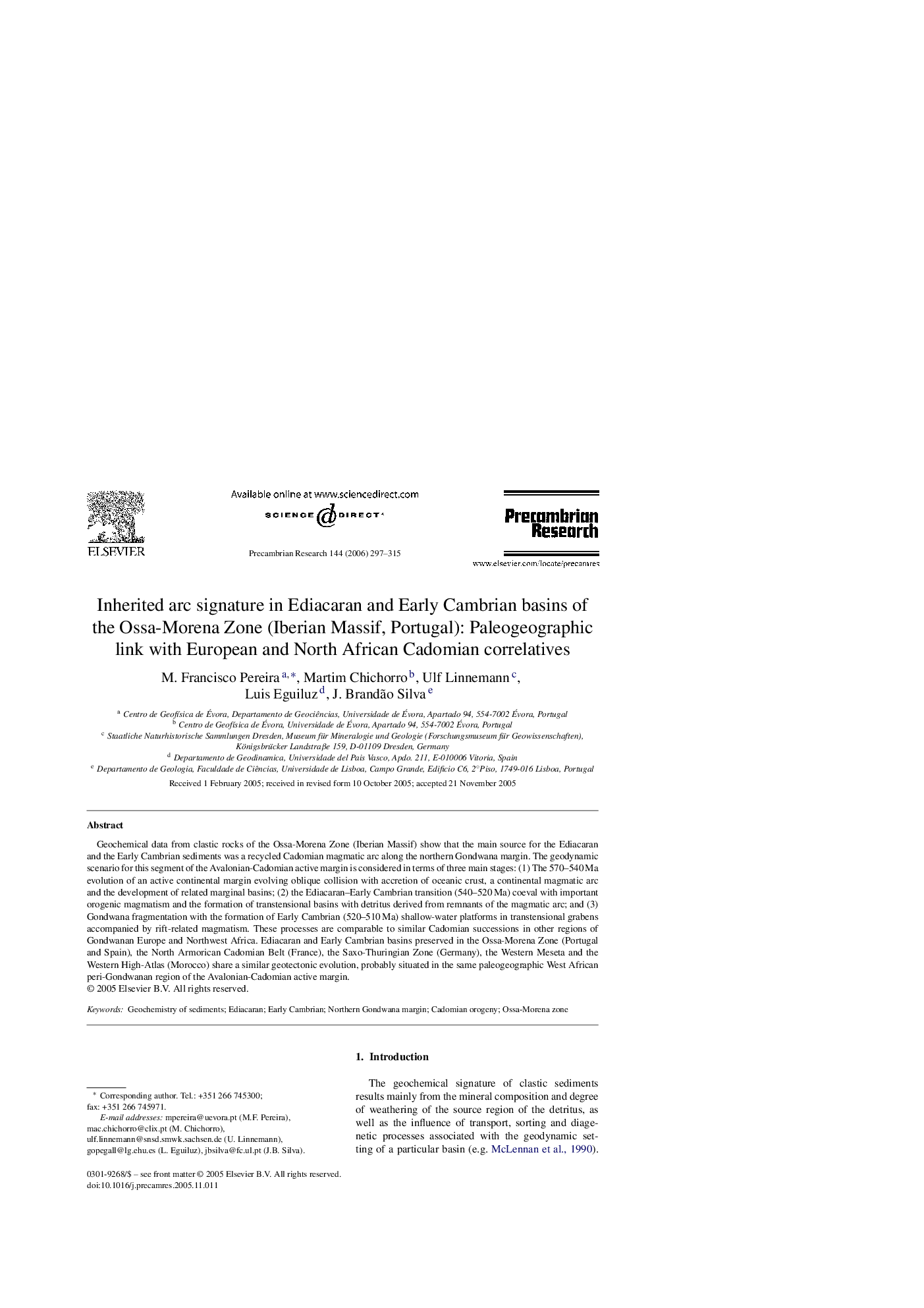| Article ID | Journal | Published Year | Pages | File Type |
|---|---|---|---|---|
| 4724622 | Precambrian Research | 2006 | 19 Pages |
Geochemical data from clastic rocks of the Ossa-Morena Zone (Iberian Massif) show that the main source for the Ediacaran and the Early Cambrian sediments was a recycled Cadomian magmatic arc along the northern Gondwana margin. The geodynamic scenario for this segment of the Avalonian-Cadomian active margin is considered in terms of three main stages: (1) The 570–540 Ma evolution of an active continental margin evolving oblique collision with accretion of oceanic crust, a continental magmatic arc and the development of related marginal basins; (2) the Ediacaran–Early Cambrian transition (540–520 Ma) coeval with important orogenic magmatism and the formation of transtensional basins with detritus derived from remnants of the magmatic arc; and (3) Gondwana fragmentation with the formation of Early Cambrian (520–510 Ma) shallow-water platforms in transtensional grabens accompanied by rift-related magmatism. These processes are comparable to similar Cadomian successions in other regions of Gondwanan Europe and Northwest Africa. Ediacaran and Early Cambrian basins preserved in the Ossa-Morena Zone (Portugal and Spain), the North Armorican Cadomian Belt (France), the Saxo-Thuringian Zone (Germany), the Western Meseta and the Western High-Atlas (Morocco) share a similar geotectonic evolution, probably situated in the same paleogeographic West African peri-Gondwanan region of the Avalonian-Cadomian active margin.
